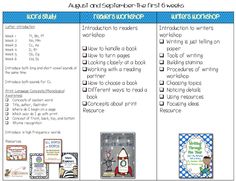
The education system in the United States includes a variety of options, including public schools, private schools, and homeschooling. States set the educational standards in K-12 public schools and mandate standardized testing. They also supervise state colleges and universities. While there are many variations of the US education system, some of the most important features are discussed below. These are the key factors to understanding the variety of options and methods that are available.
The characteristics of the US education system
The American education system is unique among others. The US educational system, in contrast to Europe's, emphasizes decentralization. This differentiates between private and public schools. While public schools are eligible for government funding, they must comply with rules to ensure efficient use of the money. Private schools do not have to follow such regulations and are able to choose their educational programs. The American left is furious at the blurring of this distinction.
The US education system is multileveled and complex. It is based on a logic chain and is considered to be one of most successful in the world. It is not regulated by law and is administered by the state. The financial capabilities of the family will influence the education level. Students can also choose to study in only one language (e.g. English) or multiple languages simultaneously.

Different types
The US education system has many different grading methods. One system compares student accomplishment to the average performance for other students. This system is particularly effective for student work that requires judgment, such as independent studies. A point system is another system that determines whether a student passes or fails a course.
The four-point system can still be found in many areas of the US education system. This includes kindergarten and elementary school. It is also used frequently in high school for conduct grades and citizenship. A grade of four can be associated with A or B letters, while "F" stands for failure.
Colleges offer unconventional courses
If you're looking for a new career option, you should consider taking one of the many unconventional courses offered by colleges and universities. These courses can be much more exciting and customizable. You can learn about Lady Gaga or the various emojis used by the public. You can also take survival classes if you are interested in learning how to survive the undead.
ESEA: The importance
The federal education law, the ESEA, was passed into law in 1965. It was intended to expand federal education assistance and improve opportunities for the low-income. However, it has been criticized for poor targeting, conflicting educational philosophies, and ambiguous implementing authority. The ESEA has two main goals. One, the federal government must provide resources for elementary or secondary education. But, in practice, it's very difficult to direct federal dollars to disadvantaged students.

ESEA was designed originally to encourage states that have certain educational achievements or policies to be eligible for federal education funding. This led to significant changes in how teachers were evaluated and how much emphasis was placed on test results. However, the ESEA reauthorization under President Obama returned some federal education power to the states and allowed them to implement their own policies.
Options for education for homeschoolers
Educational options for homeschoolers in the US vary according to state. Some states require parents to teach specific subjects and others do not. Some states also require students pass certain standardized tests. Some states offer extracurricular sports and activities for homeschooled students. Homeschooling students will need to be educated in certain subjects such as math and science.
Strong education choice programs might see more homeschoolers in states with high educational standards. These programs offer funding for curriculum, supplies and other resources. Other states allow parents to opt out of public schools and access these funds through government-authorized savings accounts (ESAs). These funds can be used for a wide range of educational expenses.
FAQ
What is the difference in school and college?
Schools are usually divided into classes (or grades), with a teacher who is responsible for teaching a specific class. Colleges offer more specialized programs, and many include university-level classes. While schools are more focused on fundamental subjects, colleges might offer a range of subjects such as arts, science and languages. The curriculum at both levels is intended to prepare students to study at higher levels.
Do you need to go to college to become an early childhood educator?
Yes, but you may consider attending college to help prepare for a career.
It is important that you realize that being a teacher can be difficult. Each year there are many applicants that are not accepted into programs. A lot of people leave college after just one semester.
You must still meet stringent qualifications to be a teacher.
What is the difference between a college and a university
A university is an institution that offers higher education. It offers courses in various areas, both undergraduate and postgraduate.
A college is generally smaller and less respected than a university. Although it may offer fewer courses, colleges often have their own specialist departments.
Are there any special skills needed for my chosen field?
To become a lawyer you will need good writing skills. You must communicate well with patients if you wish to become a nurse. You will need to be able to use math skills to become an accountant. These are just a few of the many examples. Think about all the activities that you enjoy. What type of job can you do to keep doing what you love? Engineers need to understand how to design machines or structures. You will need to know basic math in order to succeed in this field. A basic understanding of numbers and statistics is necessary to succeed in business. If you want to pursue a career as a teacher, you'll need good communication skills. You need to be able help and teach others.
Statistics
- Globally, in 2008, around 89% of children aged six to twelve were enrolled in primary education, and this proportion was rising. (en.wikipedia.org)
- These institutions can vary according to different contexts.[83] (en.wikipedia.org)
- Among STEM majors, that number is 83.5 percent. (bostonreview.net)
- Think of the rhetorical power of nineteenth-century abolitionist Harriet Beecher Stowe, Martin Luther King, Jr., or Occupy Wall Street activists with their rallying cry of “we are the 99 percent.” (bostonreview.net)
- They are more likely to graduate high school (25%) and finish college (116%). (habitatbroward.org)
External Links
How To
Where can you find a teacher job?
Teaching jobs are available in public elementary schools, private elementary schools, public middle schools, private middle schools, public secondary schools, private secondary schools, charter schools, private and parochial (Catholic) schools, public and private (non-religious) daycare centers, and other settings.
To become a teaching professional, you will need to complete a bachelor’s degree program at any of the following universities:
-
A four-year college/university
-
An associate degree program
-
Two-year community college programs
-
Combinations of these three types programs
State requirements are required to qualify for teaching certification. These include passing standardized testing and completing an internship period.
The Praxis II test is required by most states. This test measures knowledge in reading and writing as well math skills.
A lot of states also require applicants to have a specialized licence before they can be certified to teach.
These licenses are issued by the states' boards of education.
Some states grant licenses without the need for additional testing. In such cases, applicants should contact their state's board for education to find out if it is possible.
Some states don’t issue licenses until the applicant has completed a master’s degree program.
Other states allow individuals to apply directly to the state board of education for licensure.
There are many licenses available. They vary in cost, length, and requirements.
One example is that some states only require high school diplomas, while others require bachelor's degrees.
Some states may require training in particular areas such as literacy or child developmental.
Some states require candidates have a master's before they can become licensed.
Many states ask potential teachers about their past employment when applying to be certified.
You might mention that you have worked in another field on your application.
However, the majority of states will accept any previous work experience regardless of what job it was.
You may wish to list your previous job title, position, and years of service.
This information can be very helpful for potential employers.
It shows that they have relevant skills.
Working may allow you to learn new skills or gain valuable work experience.
You can showcase this to future employers by putting your resume in their hands.